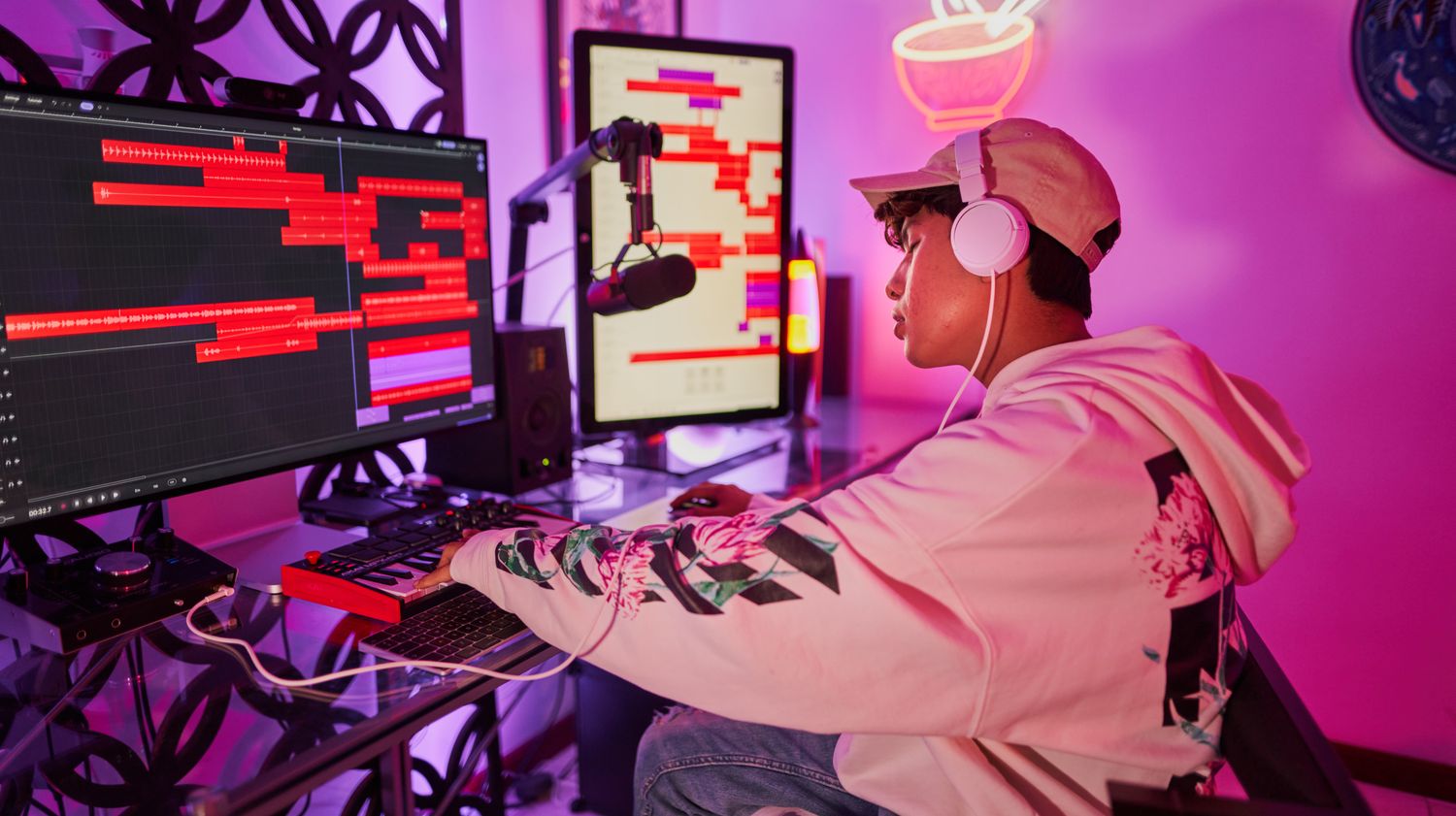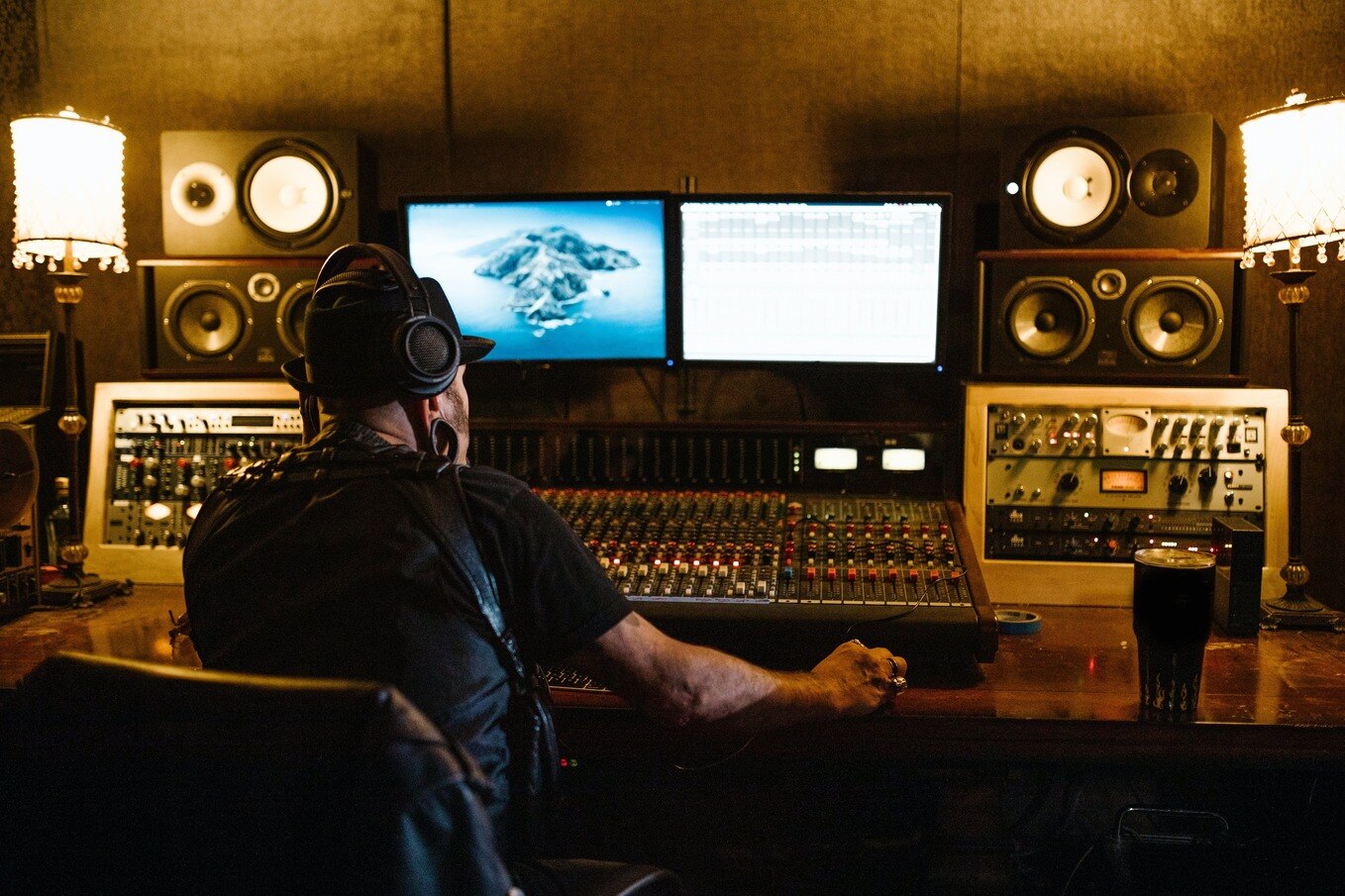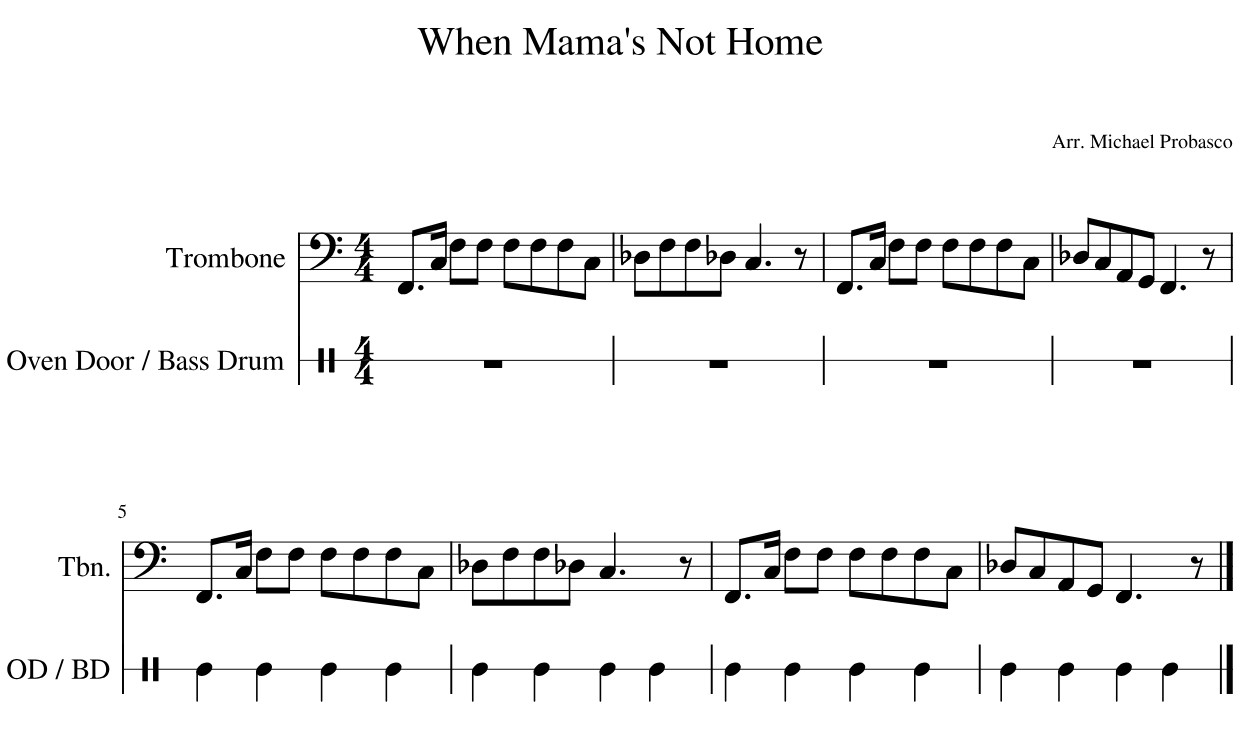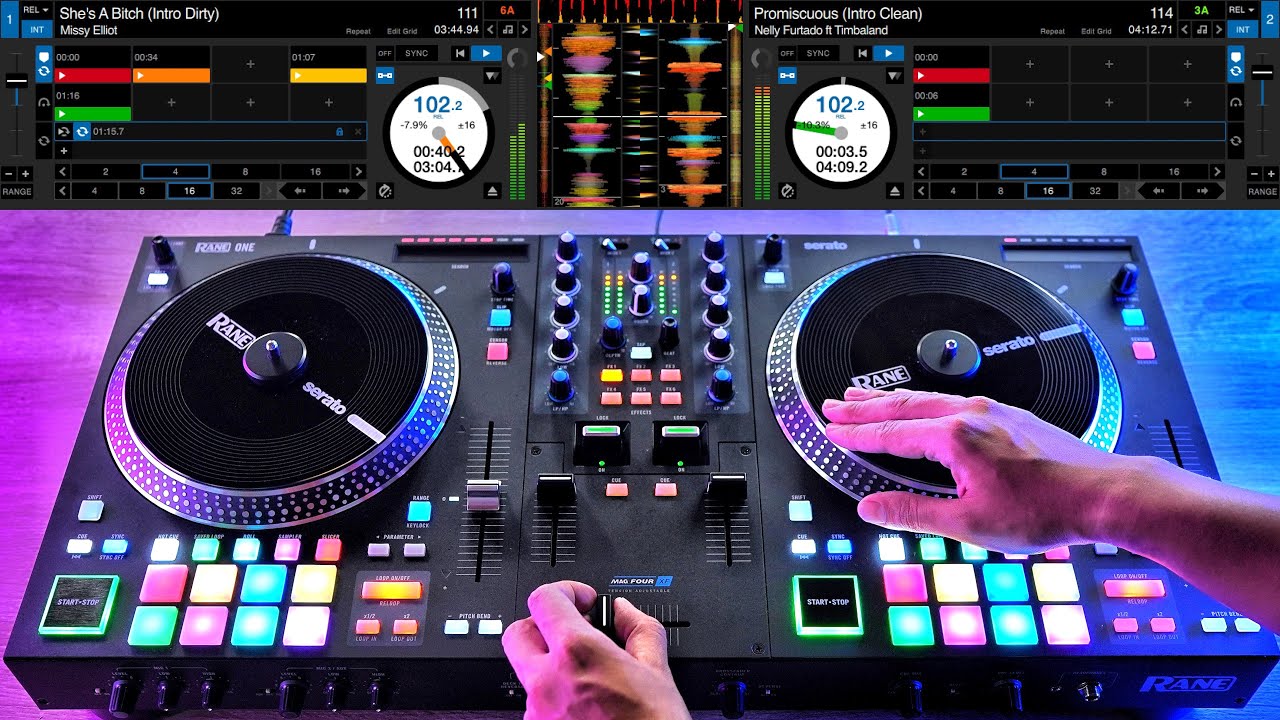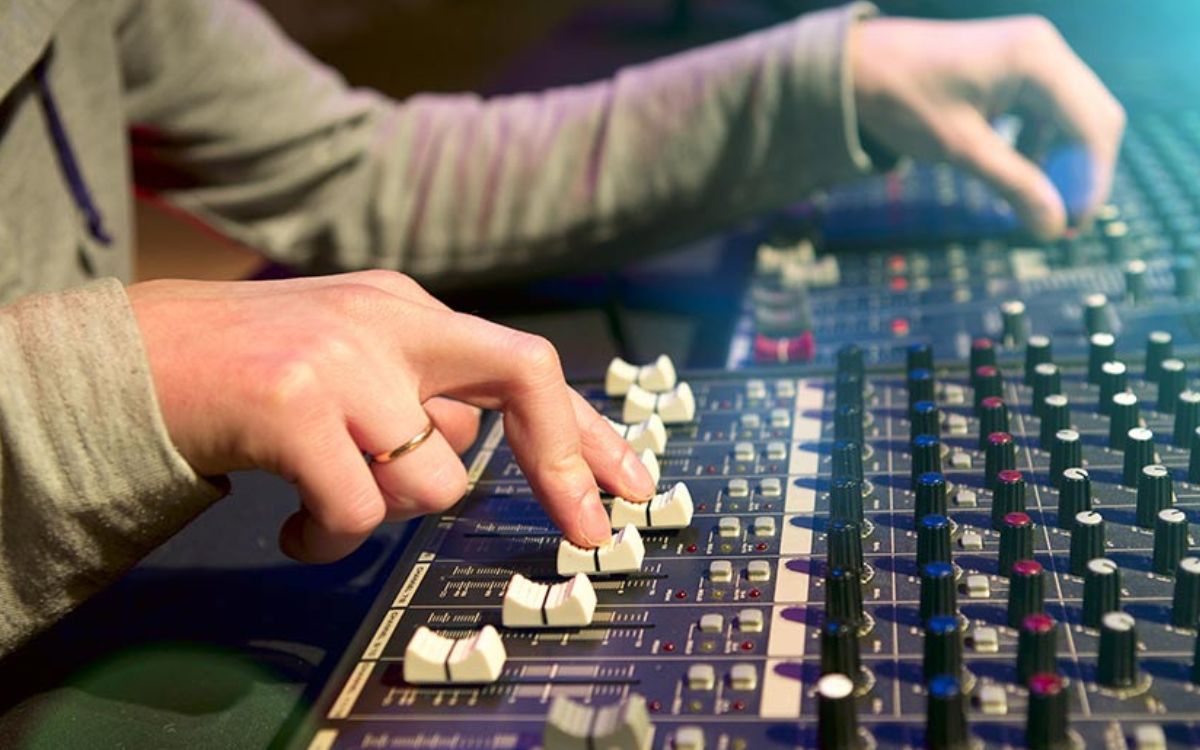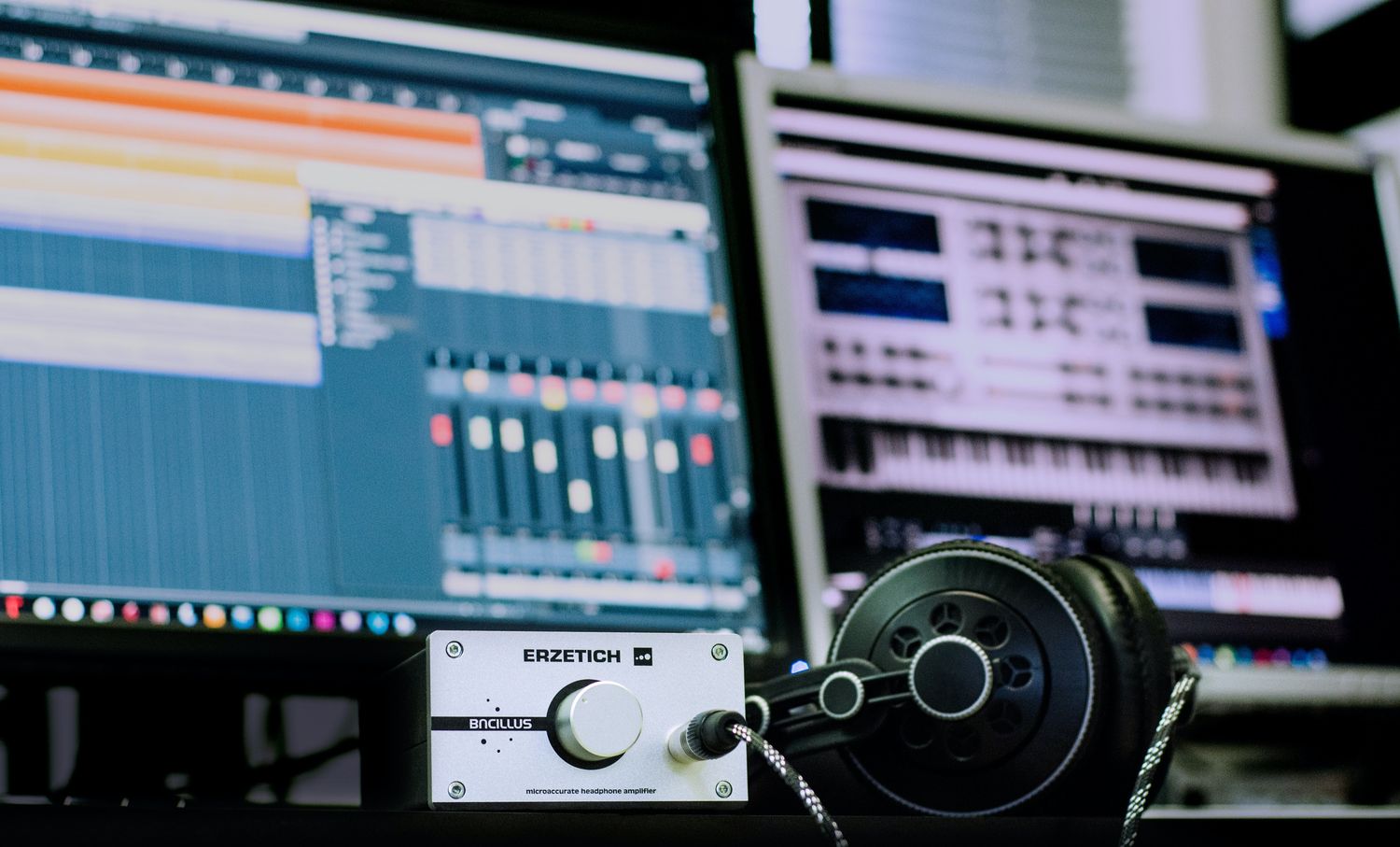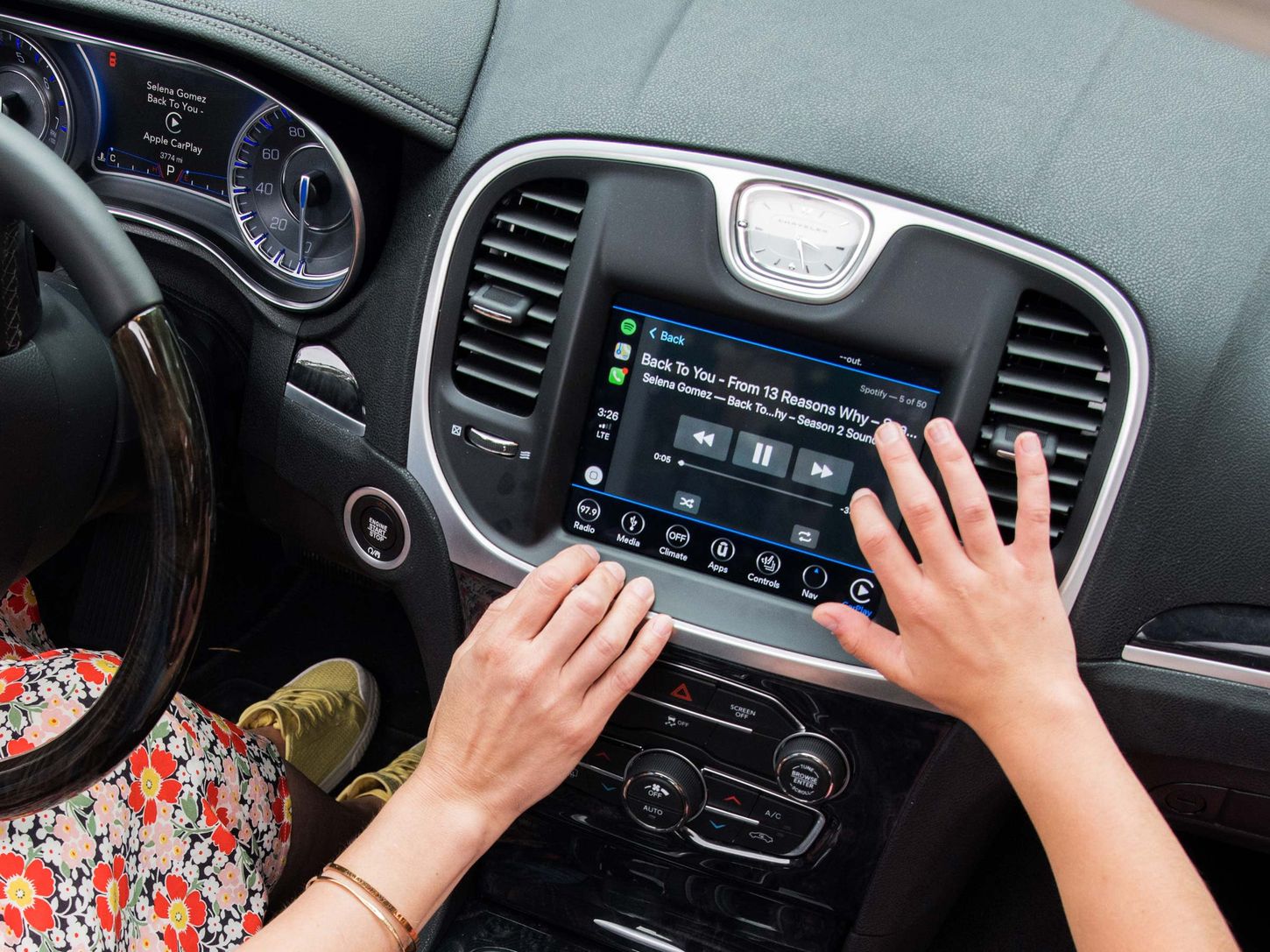Home>Production & Technology>Digital>How To Mix Digital Music In Home Studio
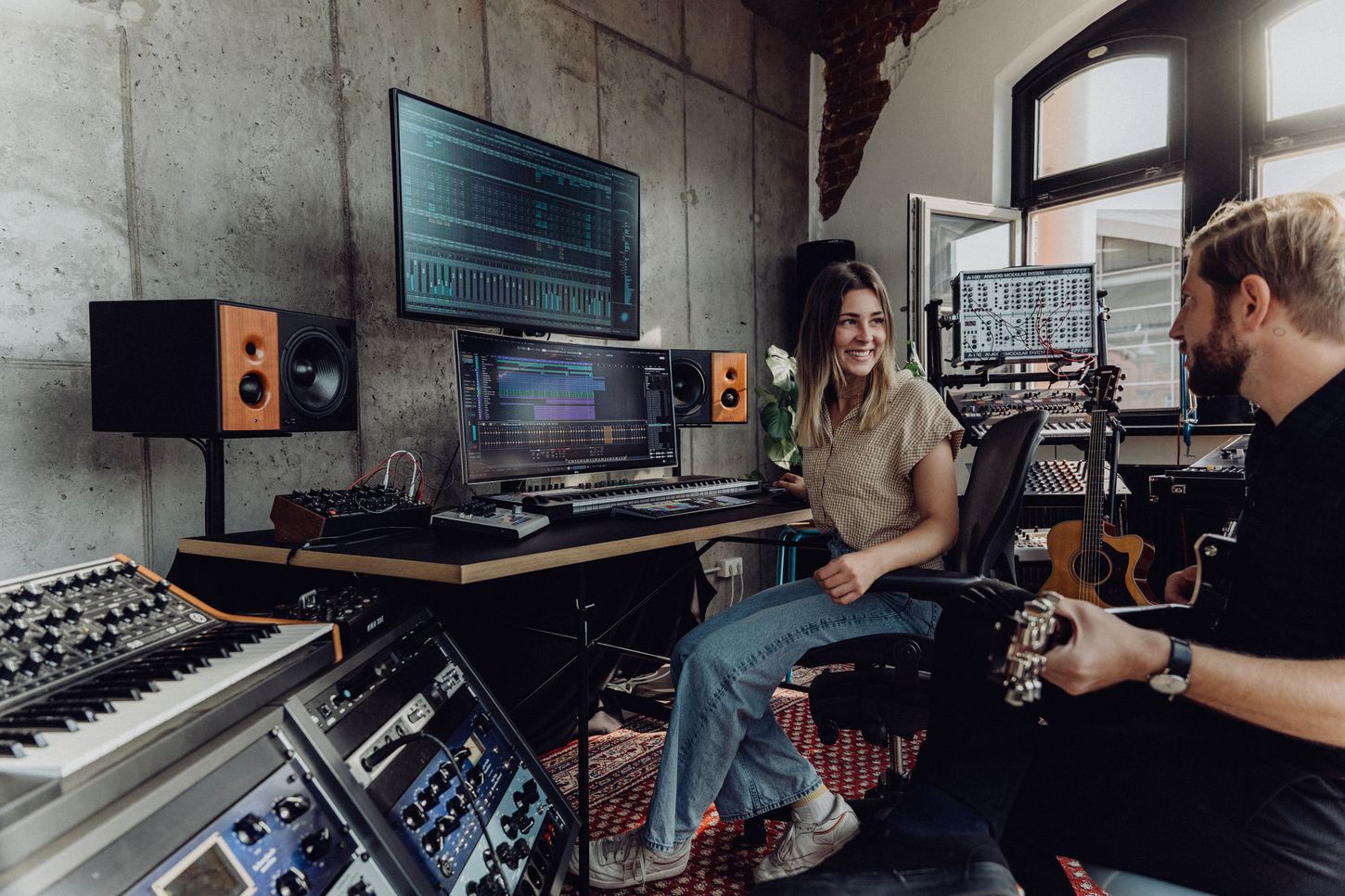

Digital
How To Mix Digital Music In Home Studio
Published: March 9, 2024
Learn how to mix digital music in your home studio with our expert tips and techniques. Create professional-sounding tracks with ease. Perfect for beginners and experienced producers alike.
(Many of the links in this article redirect to a specific reviewed product. Your purchase of these products through affiliate links helps to generate commission for AudioLover.com, at no extra cost. Learn more)
Table of Contents
Introduction
Welcome to the exciting world of digital music mixing! Whether you're a budding musician, a seasoned producer, or simply a music enthusiast looking to delve into the art of mixing, this comprehensive guide will equip you with the knowledge and techniques to create captivating and professional-sounding music right from the comfort of your home studio.
In today's digital age, the accessibility of high-quality music production tools has empowered individuals to unleash their creativity and produce music that rivals that of professional recording studios. With the right software, equipment, and know-how, you can craft multi-layered, sonically rich compositions that resonate with your audience.
The allure of digital music mixing lies in its boundless possibilities. From shaping the tonal characteristics of individual instruments to sculpting the overall sonic landscape of a song, the mixing process allows you to breathe life into your musical creations. Whether you're aiming for a crisp, modern sound or a warm, vintage vibe, the digital realm offers an array of tools and techniques to help you achieve your sonic vision.
Throughout this guide, we will explore the essential components of setting up a home studio, selecting the right software and equipment, and understanding the intricacies of digital music mixing. We'll delve into basic and advanced mixing techniques, providing you with a solid foundation to elevate your music production skills.
Moreover, we'll uncover invaluable tips and strategies to help you achieve a professional sound that stands out in today's competitive music landscape. By the end of this journey, you'll be equipped with the knowledge and confidence to unleash your creativity and produce music that captivates and resonates with your audience.
So, whether you're an aspiring artist seeking to self-produce your music, a passionate hobbyist looking to refine your skills, or a seasoned producer aiming to expand your sonic repertoire, this guide is your gateway to unlocking the boundless potential of digital music mixing in the comfort of your own home studio. Let's embark on this exhilarating journey and unleash the full potential of your musical creativity!
Setting Up Your Home Studio
Setting up a home studio is the foundational step towards creating a conducive environment for digital music mixing. Whether you have a dedicated room or a compact space within your home, optimizing your studio setup can significantly impact the quality of your music production. Here's a comprehensive guide to help you establish an efficient and inspiring home studio.
1. Selecting the Ideal Space
Choosing the right location for your home studio is crucial. Look for a space that offers a balance of acoustics, comfort, and functionality. Consider factors such as room dimensions, natural lighting, and sound isolation to create an environment conducive to creativity and productivity.
2. Acoustic Treatment
Addressing acoustic issues within your studio space is essential for achieving accurate sound reproduction. Implement acoustic treatment such as bass traps, diffusers, and acoustic panels to minimize unwanted reflections and resonances, ensuring that your mixes translate accurately across various playback systems.
3. Ergonomic Workspace
Designing an ergonomic workspace is vital for long hours of music production. Invest in a comfortable chair, an adjustable desk, and monitor stands to maintain proper posture and reduce fatigue during extended mixing sessions.
4. Power and Connectivity
Ensure that your studio space is equipped with sufficient power outlets and stable internet connectivity. Consider investing in surge protectors and cable management solutions to safeguard your equipment and maintain a clutter-free workspace.
5. Lighting and Ambiance
Create a visually inspiring atmosphere by incorporating suitable lighting and decor. Adjustable LED lights, wall art, and plants can contribute to a welcoming and creative studio environment.
6. Organization and Storage
Efficient organization of cables, instruments, and accessories is essential for a clutter-free and productive studio space. Invest in storage solutions such as shelves, racks, and storage containers to keep your equipment easily accessible and well-maintained.
By meticulously setting up your home studio with attention to detail, you can establish an environment that fosters creativity, productivity, and sonic precision. This foundational step lays the groundwork for seamless music production and sets the stage for an immersive digital music mixing experience.
Choosing the Right Software and Equipment
Selecting the appropriate software and equipment is pivotal in shaping the sonic landscape of your music and optimizing your digital music mixing workflow. From digital audio workstations (DAWs) to studio monitors and audio interfaces, each component plays a crucial role in realizing your creative vision. Here's a comprehensive exploration of the essential software and equipment to consider for your home studio setup.
Digital Audio Workstation (DAW)
The DAW serves as the central hub for music production and digital music mixing. When choosing a DAW, consider factors such as user interface, compatibility with third-party plugins, and the availability of essential features such as multi-track recording, MIDI support, and robust mixing capabilities. Popular DAWs such as Ableton Live, Logic Pro, Pro Tools, and FL Studio offer diverse workflows and tools to cater to different musical styles and production preferences.
Studio Monitors
Investing in high-quality studio monitors is crucial for accurate sound reproduction and critical listening. Look for monitors that offer a flat frequency response, detailed midrange, and extended bass response. Additionally, consider room size and acoustic characteristics when selecting monitor size and configuration to ensure optimal sound translation in your studio environment.
Audio Interface
An audio interface acts as the bridge between your instruments, microphones, and studio monitors, enabling high-quality audio capture and playback. When choosing an audio interface, prioritize features such as low-latency monitoring, multiple input/output options, and transparent preamps to maintain the integrity of your recordings and mixes.
Microphones
For recording vocals, acoustic instruments, and other sound sources, selecting the right microphones is essential. Dynamic microphones are ideal for capturing loud sound sources, while condenser microphones excel in capturing nuanced details and high-frequency content. Consider the sonic characteristics of different microphone models to complement your recording and mixing requirements.
MIDI Controllers
MIDI controllers offer tactile control over virtual instruments, effects, and mixing parameters within your DAW. Whether it's a keyboard controller, pad controller, or a versatile MIDI control surface, integrating a MIDI controller into your setup can enhance creativity and streamline the music production process.
Plugins and Virtual Instruments
Expand your sonic palette by incorporating high-quality plugins and virtual instruments into your DAW. From EQs and compressors to virtual synthesizers and sampled instruments, a diverse collection of plugins can elevate your mixing capabilities and inspire new musical ideas.
By carefully selecting the right software and equipment tailored to your musical preferences and production goals, you can establish a home studio setup that empowers you to unleash your creative potential and achieve professional-grade results in digital music mixing.
Understanding Digital Music Mixing
Digital music mixing is a fundamental aspect of music production that involves the art of blending individual audio tracks into a cohesive and harmonious sonic masterpiece. At its core, digital music mixing encompasses a myriad of creative and technical processes aimed at sculpting the tonal balance, spatial depth, and dynamic range of a musical composition. Understanding the intricacies of digital music mixing is essential for aspiring producers and musicians seeking to elevate the sonic quality of their productions.
Central to the concept of digital music mixing is the manipulation of individual audio elements within a composition. This includes adjusting the volume levels of each track to achieve a balanced mix, applying equalization to shape the frequency response of instruments and vocals, implementing dynamic processing such as compression and limiting to control the dynamics of audio signals, and integrating spatial effects like reverb and delay to create a sense of depth and dimension within the mix.
Furthermore, digital music mixing involves the strategic placement of audio elements within the stereo field, allowing for a sense of spatial separation and clarity. By panning instruments and vocals across the stereo spectrum, mix engineers can create a sense of width and immersion, enhancing the overall listening experience for the audience.
In addition to the technical aspects, digital music mixing is deeply rooted in creativity and artistic expression. It provides a platform for producers and mix engineers to infuse their unique sonic imprint onto a composition, shaping the emotional impact and sonic identity of the music. Whether it's crafting a punchy and impactful drum sound, sculpting lush and atmospheric textures, or ensuring the vocal sits prominently in the mix, digital music mixing empowers creators to realize their artistic vision and connect with their audience on a profound level.
Moreover, the advent of digital audio workstations (DAWs) has revolutionized the landscape of music production, offering a vast array of tools and capabilities for digital music mixing. From intuitive mixing consoles and comprehensive signal processing plugins to advanced automation and routing options, modern DAWs provide an immersive platform for realizing intricate and polished mixes.
In essence, understanding digital music mixing entails a harmonious blend of technical proficiency, creative intuition, and a deep appreciation for the sonic intricacies of music. It is a dynamic and transformative process that empowers creators to breathe life into their musical creations, transcending the boundaries of traditional recording and unleashing the full potential of sound manipulation in the digital realm.
Basic Mixing Techniques
Basic mixing techniques form the cornerstone of crafting well-balanced and sonically pleasing music productions. Whether you're new to digital music mixing or seeking to reinforce your foundational skills, mastering these techniques is essential for achieving clarity, cohesion, and impact in your mixes.
1. Setting Levels and Balance
Establishing the appropriate volume levels for each track is the first step in creating a balanced mix. By adjusting the faders of individual tracks within your digital audio workstation (DAW), you can ensure that no element overwhelms the others, allowing for a harmonious blend of instruments and vocals.
2. Equalization (EQ)
Utilizing EQ to sculpt the frequency content of each track is crucial for creating clarity and separation within the mix. By attenuating or boosting specific frequency ranges, you can carve out space for different instruments, enhance the tonal characteristics of vocals, and address any frequency masking issues that may arise.
3. Dynamic Processing
Implementing dynamic processing techniques such as compression and limiting helps control the dynamic range of individual tracks, ensuring a consistent and polished sound. Compression can tame unruly transients and add punch to drums, while limiting prevents signal peaks from exceeding a certain threshold, safeguarding against unwanted distortion.
4. Panning and Spatial Placement
Manipulating the placement of instruments and vocals within the stereo field adds depth and dimension to your mix. By panning elements left or right, you can create a sense of space and separation, contributing to a more immersive listening experience.
5. Reverb and Delay
Integrating reverbs and delays can infuse your mix with ambiance and spatial character. These effects can add depth to vocals, create a sense of space around instruments, and contribute to the overall atmosphere of the mix.
6. Automation
Utilizing automation within your DAW allows for precise control over various mix parameters over time. Whether it's automating volume changes, EQ adjustments, or effect parameters, automation adds movement and dynamics to your mix, enhancing its overall impact.
Mastering these basic mixing techniques lays a solid foundation for creating professional-sounding mixes that captivate listeners and convey the intended emotional impact of the music. As you refine your skills and gain confidence in applying these techniques, you'll find yourself equipped to embark on more advanced mixing endeavors, further elevating the sonic quality of your music productions.
Advanced Mixing Techniques
Delving into the realm of advanced mixing techniques unveils a world of intricacy and finesse, allowing mix engineers and producers to elevate their sonic creations to new heights. These techniques encompass a blend of technical prowess, creative experimentation, and an acute understanding of sonic nuances. By integrating these advanced methods into the digital music mixing process, creators can sculpt immersive and captivating soundscapes that resonate deeply with their audience.
1. Parallel Processing and New York Compression
Parallel processing, often referred to as New York compression, involves blending a heavily compressed version of a signal with its dry, uncompressed counterpart. This technique is particularly effective for adding weight, presence, and impact to individual tracks or the overall mix. By blending the compressed and uncompressed signals at varying levels, mix engineers can achieve a perfect balance between clarity and intensity, enhancing the overall sonic character of the music.
2. Multiband Compression and Dynamic EQ
Multiband compression and dynamic EQ offer precise control over specific frequency ranges within a mix. By dynamically compressing or equalizing targeted frequency bands, mix engineers can address tonal imbalances, tame resonant frequencies, and sculpt the overall tonal balance of individual tracks. This level of granularity empowers creators to fine-tune the sonic characteristics of their mixes with surgical precision.
3. Mid-Side Processing
Mid-Side processing allows for independent manipulation of the center (mid) and stereo (side) components of a stereo signal. By applying different processing to the mid and side channels, such as EQ, compression, or spatial effects, mix engineers can shape the spatial imaging and tonal balance of the mix with unparalleled control. This technique is invaluable for creating a sense of width, depth, and clarity within the stereo field.
4. Harmonic Exciters and Saturation
Harmonic exciters and saturation plugins introduce harmonically rich overtones and subtle distortion to individual tracks or the overall mix. By enhancing the harmonic content of audio signals, these tools can add warmth, presence, and perceived loudness to the music. When used judiciously, harmonic exciters and saturation can infuse a sense of analog warmth and musicality into digital mixes.
5. Advanced Reverb and Delay Techniques
Exploring advanced reverb and delay techniques, such as convolution reverb, algorithmic reverbs with modulation, and rhythmic delay patterns, opens up a world of spatial manipulation and sonic experimentation. These techniques allow for the creation of immersive and evolving reverberant spaces, intricate delay effects, and ethereal atmospheres that elevate the sonic narrative of the music.
By integrating these advanced mixing techniques into their workflow, creators can unlock a realm of sonic possibilities, transcending the boundaries of traditional mixing and infusing their music with depth, emotion, and sonic allure. These techniques serve as a testament to the artistry and technical finesse inherent in the digital music mixing process, empowering creators to realize their sonic vision with unparalleled precision and creativity.
Tips for Achieving Professional Sound
Achieving a professional sound in digital music mixing goes beyond technical proficiency; it encompasses a holistic approach that integrates creative insight, attention to detail, and a commitment to sonic excellence. Here are essential tips to elevate your mixes to a professional standard:
-
Critical Listening and Reference Tracks: Train your ears by critically listening to professional mixes across various genres. Use reference tracks to benchmark the tonal balance, spatial imaging, and overall sonic characteristics of your mix against industry standards.
-
Gain Staging and Headroom: Maintain proper gain staging throughout your mix to prevent signal clipping and ensure optimal headroom. By setting appropriate levels at each stage of the signal chain, you can preserve the integrity of your audio and facilitate a clean and dynamic mix.
-
Subtractive EQ and Frequency Masking: Embrace the concept of subtractive EQ to carve out space for individual instruments within the mix. Address frequency masking issues by identifying conflicting frequency ranges and applying precise EQ adjustments to enhance clarity and separation.
-
Mix in Mono: Switching to mono playback periodically allows you to focus on the core elements of your mix, revealing potential phase issues, mono compatibility, and the inherent balance of instruments and vocals without the influence of stereo imaging.
-
Dynamic Range and Musical Dynamics: Preserve the musical dynamics of your mix by avoiding excessive compression and ensuring that the mix breathes naturally. Embrace dynamic range to maintain the emotional impact and expressiveness of the music.
-
Surgical Automation: Utilize automation to fine-tune the nuanced aspects of your mix. From subtle volume rides to intricate parameter adjustments, surgical automation adds movement and emotion, enhancing the overall cohesiveness of the mix.
-
A/B Testing and Iterative Refinement: Continuously A/B test your mix against reference tracks and previous versions, allowing for iterative refinement. This iterative approach enables you to make informed decisions and progressively enhance the sonic quality of your mix.
-
Room Acoustics and Monitoring Environment: Pay attention to your room acoustics and monitoring environment. Addressing acoustic anomalies and optimizing your listening environment can significantly impact the accuracy of your mix decisions.
-
Collaboration and Feedback: Seek feedback from trusted peers, mentors, or online communities. Fresh perspectives and constructive criticism can provide valuable insights and help you identify areas for improvement in your mix.
-
Mastering Considerations: Keep in mind the mastering process while mixing. Avoid over-processing and leave headroom for the mastering engineer to apply the final touches and ensure optimal translation across various playback systems.
By embracing these tips and integrating them into your digital music mixing workflow, you can elevate your mixes to a professional standard, captivating listeners and leaving a lasting impression with your sonic creations.
Conclusion
In the realm of digital music mixing, the journey from setting up a home studio to mastering advanced mixing techniques is a testament to the boundless creativity and technical finesse inherent in the art of music production. As we conclude this comprehensive guide, it's evident that the fusion of technology, creativity, and dedication has empowered individuals to craft professional-grade music right from the comfort of their own home studios.
The process of setting up a home studio serves as the foundational step, laying the groundwork for a conducive and inspiring environment where musical ideas can flourish. From acoustics and ergonomics to organization and ambiance, the attention to detail in studio setup is pivotal in fostering creativity and productivity.
Choosing the right software and equipment is equally crucial, as it empowers creators to harness the full potential of digital music mixing. Whether it's selecting a versatile digital audio workstation (DAW), high-quality studio monitors, or a transparent audio interface, the right tools serve as the conduits through which sonic visions are realized.
Understanding the intricacies of digital music mixing unveils a world of sonic manipulation and artistic expression. From basic techniques such as setting levels and balance to advanced methods like mid-side processing and harmonic exciters, the mixing process transcends mere technicality, offering a canvas for creators to imbue their music with emotion, depth, and character.
Moreover, the tips for achieving a professional sound encapsulate the holistic approach required to elevate mixes to industry standards. From critical listening and gain staging to dynamic range preservation and iterative refinement, these tips underscore the commitment to sonic excellence that defines the pursuit of professional-grade music production.
As creators embark on their digital music mixing journey, it's essential to embrace the iterative nature of the process, allowing for experimentation, growth, and continuous refinement. Each mix serves as a stepping stone, a testament to the evolving skill set and artistic vision of the creator.
In essence, digital music mixing transcends the manipulation of audio signals; it embodies the convergence of artistry, technology, and passion. It empowers creators to weave sonic tapestries that resonate deeply with audiences, transcending the boundaries of traditional recording and unleashing the full potential of sound manipulation in the digital realm. So, as you embark on your digital music mixing endeavors, may this guide serve as a compass, guiding you through the exhilarating landscape of music production, and may your creative endeavors yield music that captivates, inspires, and resonates with the world.

